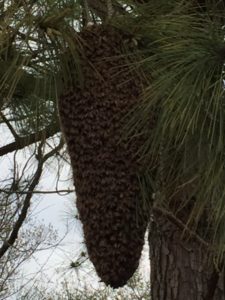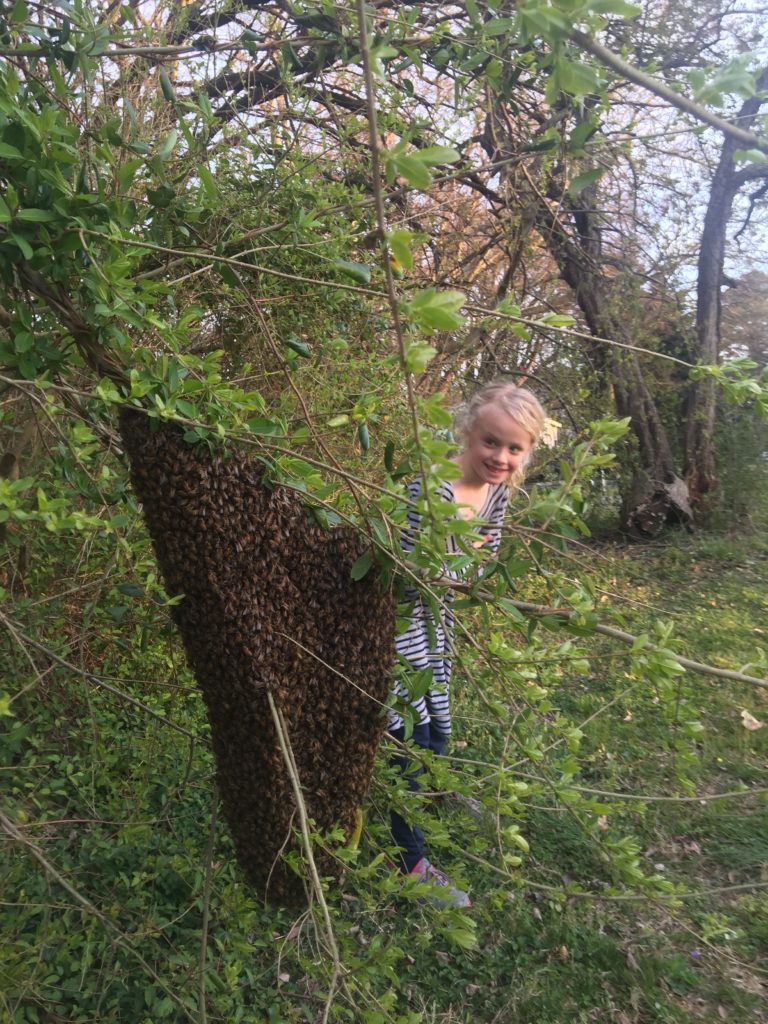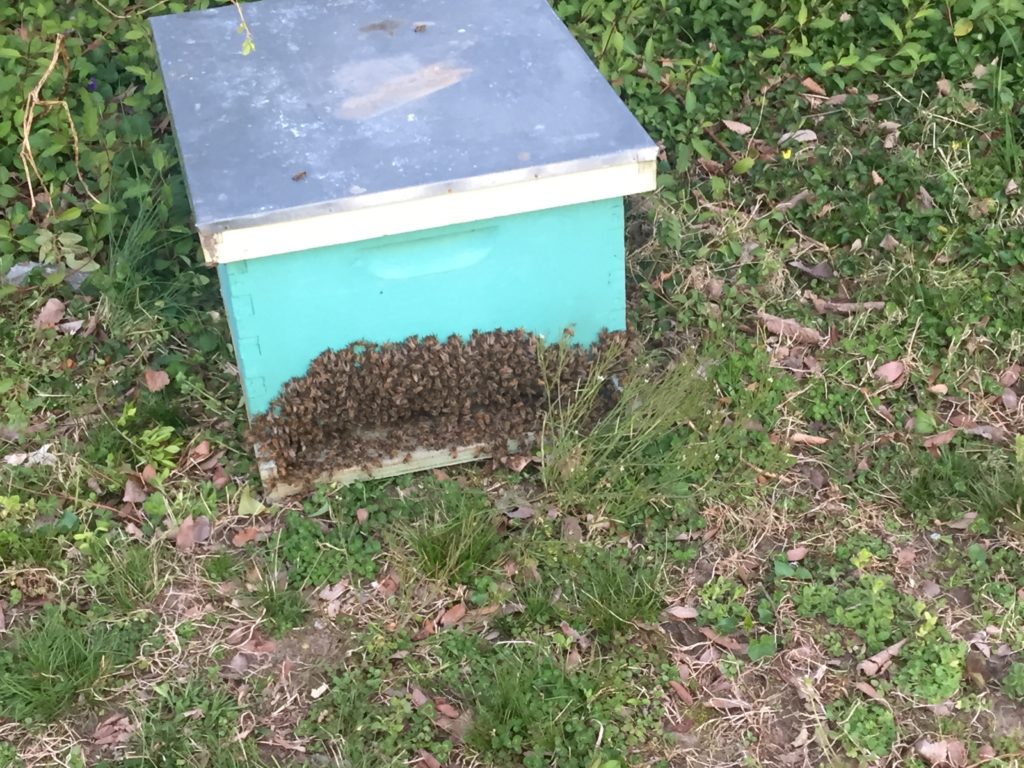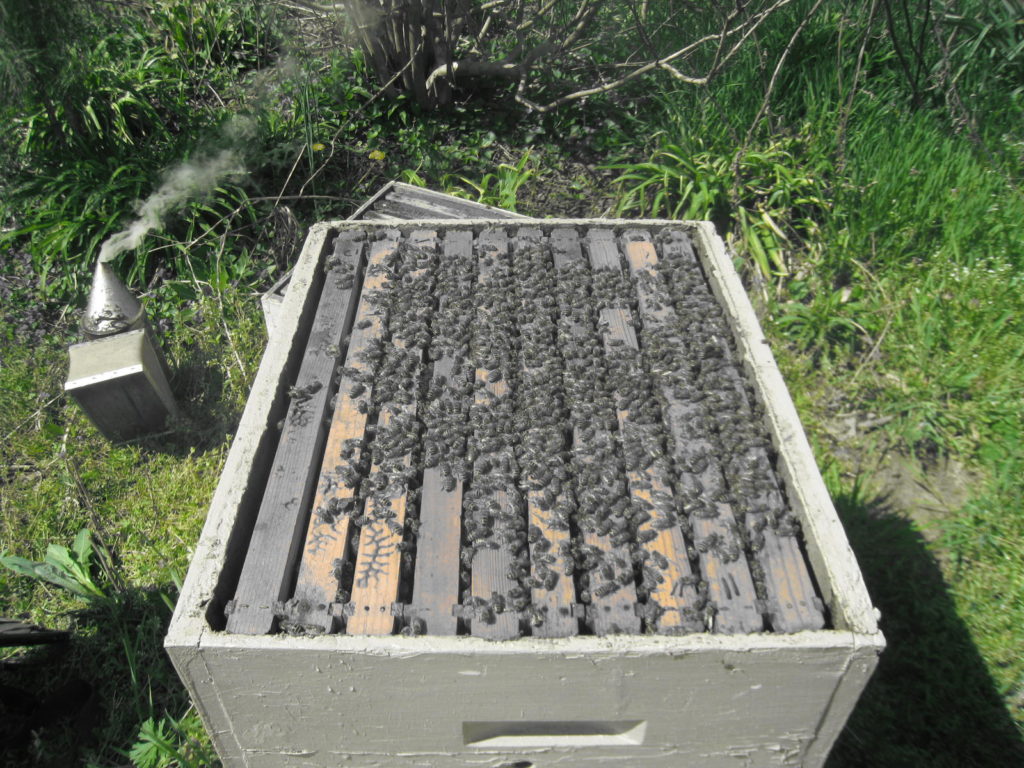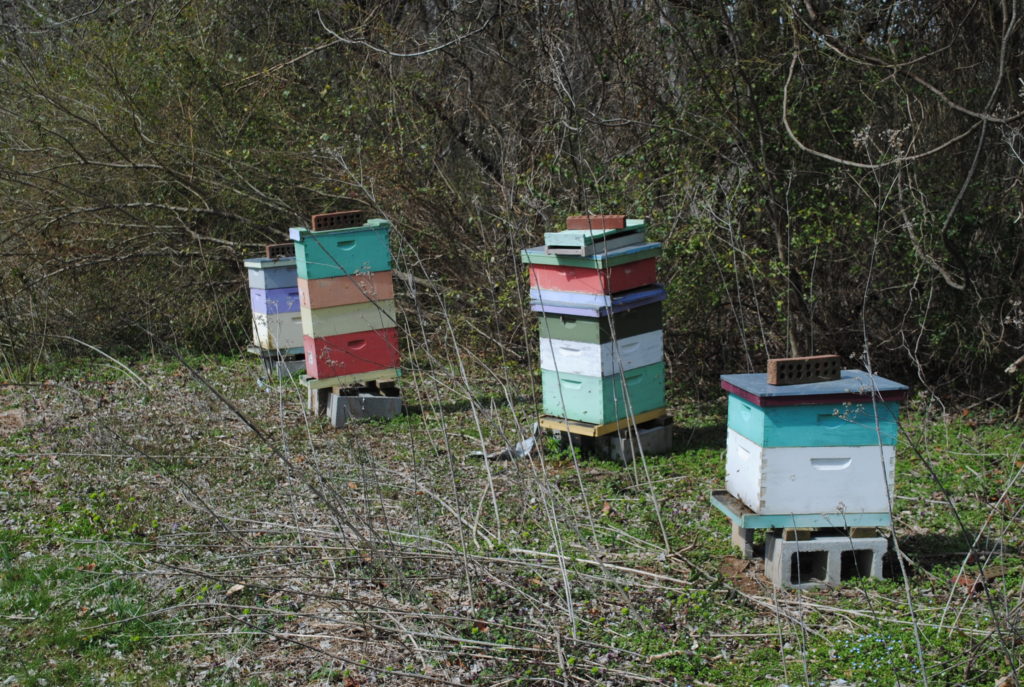The Hive Set-up
This time of year, as folks come to pick up their Nucs, I often get the question of what kind of boxes (Deep, Medium or Shallow) should I use for my bees. It’s a logical question, as there are all sorts of different set-ups out there and it can get confusing.
First, some basics – there are generally three types of langstroth hive boxes:
- Deeps (frames are 9-5/8 inches high),
- Mediums (frames are 6-5/8 inches high), and
- Shallows (frames are 5-11/16 inches high)
When I first got into beekeeping, I remember wondering why in the heck were there three sizes? It’s not like we have small bees and large bees – they are all the same size! I soon found out that Deeps and Shallows had been around a long time. Deeps were traditionally used for the bees to keep their home – raise the brood and store some resources (honey, pollen, etc…) Shallows were for honey – they were smaller and easier to pick up and move around when full of honey. I think most of the old time beekeepers in our area kept bees in two deeps (home/brood chambers) and used a bunch of shallows for honey.
(I use two terms to describe my boxes – brood boxes and honey supers. They live in the former all year round. They store honey in the latter for me to harvest in May/June/July. Depending on the situation, I have used all three boxes sizes for brood chambers, but only Mediums and Shallows for honey supers.)
Mediums came along later, initially to replace the heavy Deeps for brood chambers (I am sure lifting the top Deep off in a two Deep setup would break anyone’s back) but then folks also started to use them as honey supers.
I started off using a double deep setup (as described above) for my brood chambers. Within a couple of years, it was clear to me that it was too much space for my area. The bees hardly made it through a fraction of their honey over the Winter, it was a huge amount of space for smaller colonies to manage and it seemed to encourage swarming (by creating a honey boundary above them from the start of the season.) I soon started to experiment with a single deep under a single medium. This is my primary setup today. I do run Deep-Shallow setups and a few with only 3 mediums for the brood chamber. All of these setups work for me in my area. I seem to prefer the Deep-Medium setup, based on the numbers.
For honey, I use both Mediums and Shallows. Shallows are a dream, mainly because they are fairly light, even when full of honey. I continue to use them to this day, but may end up phasing them out. They are fine if you are running a few hives in your backyard, but having 3 sizes can be a pain when I need to run to 5 different yards in one afternoon and need to be stocked up in all three sizes to be prepared. I am thinking of moving to only Deeps and Mediums, to ease the inspection cycle, but have not committed yet.
For Nucs, I create both Deeps and Mediums. 5 frames of bees, in either the Deep or Medium size.


